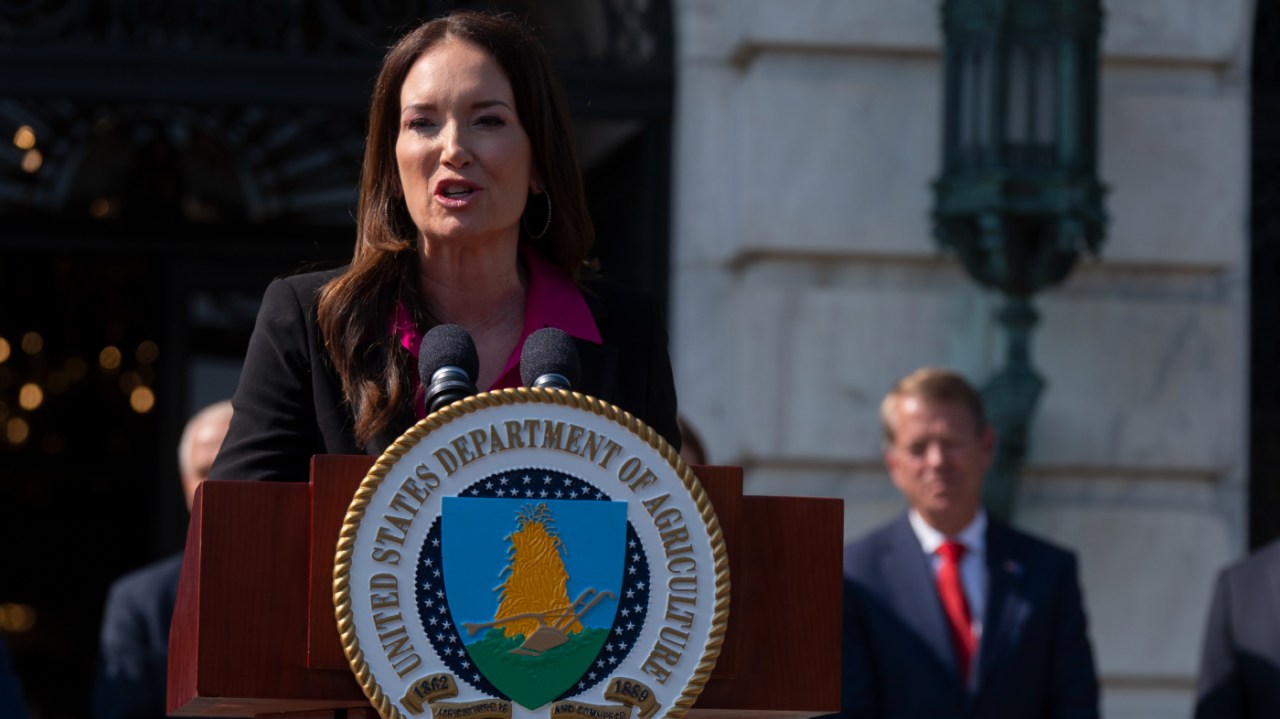The Trump administration is assessing the possibility of providing financial assistance to U.S. farmers this autumn, according to Agriculture Secretary Brooke Rollins, who spoke at a gathering of the National Association of State Departments of Agriculture in Rogers, Arkansas. She emphasized that officials are collaborating with lawmakers and tracking market trends closely to determine if further support will be necessary in the coming months.
Senate Agriculture Committee Chair John Boozman (R-Ark.) has been actively discussing the economic hardships facing rural communities, with a spokesperson confirming that the senator is in talks with both federal agencies and fellow legislators about potential aid measures. Earlier in September, Boozman stated that all options are under consideration when it comes to supporting agricultural producers.
Meanwhile, American soybean growers have not secured any purchases from Chinese importers this season, even though domestic yields have improved compared to previous years. China appears to be leveraging soybean imports as part of its broader trade strategy in ongoing negotiations with the United States. Instead of buying from U.S. suppliers, Chinese buyers have committed to importing approximately 7.4 million metric tons of soybeans from Brazil, Argentina, and Uruguay for delivery in October—meeting nearly all of the nation’s expected demand for the month.
This shift marks a notable decline from last year’s figures, when China purchased 5.9 million metric tons from American farms and only 3.7 million from South American sources during the same period. Despite higher productivity—U.S. farmers achieved an average of 53.5 bushels per acre this season, surpassing both the 2023-24 and projected 2024-25 averages—market access remains a challenge.
The situation is further complicated by recent reductions in USDA funding programs. In March, over $1 billion was cut from initiatives that helped schools and food banks source food directly from local agricultural operations. These changes have added pressure on farming communities already dealing with fluctuating global demand.
Trade policies continue to shape the landscape: U.S. tariffs on Chinese goods remain at 30 percent, while China imposes a 10 percent duty on American imports. A temporary truce agreed upon last month paused further tariff hikes for 90 days, with a critical decision point set for November 10.
Agricultural exports totaled $176 billion last year, with nearly 29 percent directed toward East Asian markets, according to a USDA report issued in July. During Trump’s first presidency, the department disbursed around $23 billion in aid to farmers affected by trade disputes, following an estimated $27 billion loss in export value due to those conflicts.
— news from The Hill
— News Original —
Trump administration considering economic aid for farmers: Agriculture secretary
The Trump administration is evaluating whether to grant aid to American farmers this fall, Agriculture Secretary Brooke Rollins said Monday. n n“We are working with our colleagues in Congress and closely monitoring markets daily to evaluate the amount of additional assistance that might be needed this fall,” Rollins said at a meeting of the National Association of State Departments of Agriculture in Rogers, Ark. n nA spokesperson for Senate Agriculture, Nutrition and Forestry Committee Chair John Boozman (R-Ark.) told The Hill that the senator “is engaging with his colleagues and the administration about the dire circumstances in rural America and the need to provide farmers resources to continue farming.” Boozman told Brownfield Ag News earlier this month that “everything is on the table” regarding assistance to farmers. n nThe Hill has also reached out to the office of House Agriculture Committee Chairman Glenn Thompson (R-Pa.) for comment on Rollins’s remarks. n nRollins’s comments come as Chinese buyers have yet to purchase soybeans from U.S. farmers, despite increased production yields relative to last year. China is utilizing soybeans as a bargaining chip in its ongoing trade negotiations with the Trump administration. n nThey also come as farmers feel the impacts of the administration’s cuts to U.S. Department of Agriculture (USDA) programs. In March, the agency cut more than $1 billion in funding for schools and food banks to purchase goods from local farms and ranches. n nU.S. tariffs on Chinese imported goods are set at 30 percent, while Chinese tariffs on American imported goods are set at 10 percent. Last month, the two countries agreed to pause tariff increases on each other’s goods for 90 days; the new deadline to reach an agreement before tariff rates increase is Nov. 10. n nAccording to the latest World Agricultural Supply and Demand Estimates report, released Sept. 12, American farmers have produced 53.5 bushels per acre of soybeans, ahead of the 2023-24 seasonal total of 50.6 bushels per acre and the 2024-25 seasonal estimate of 50.7 bushels per acre. n nHowever, despite the increased yield, Chinese buyers have opted for South American soybeans, booking roughly 7.4 million metric tons of shipments from Brazil, Argentina and Uruguay for October. That accounts for 95 percent of the country’s projected demand for the crop next month. n nLast October, by contrast, saw Chinese buyers purchase 5.9 million metric tons of soybeans from American farmers and 3.7 million metric tons from South American farmers. U.S. agricultural exports reached $176 billion last year, according to a July report from the USDA. In that report, the agency also noted that 28.6 percent of agricultural exports went to East Asia. n nDuring President Trump’s first term, the USDA sent roughly $23 billion to farmers in the midst of the president’s initial trade battle with China. USDA research showed that $27 billion in agricultural exports were lost as a result of the trade war. n nUpdated: 5:30 p.m.
